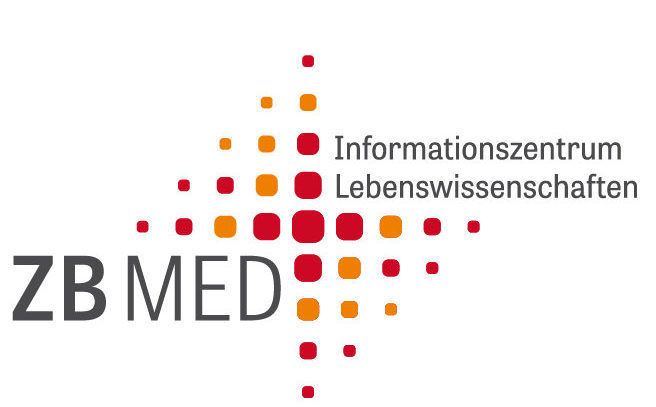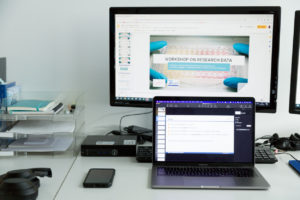What is the ELN Finder?
The ELN Finder helps researchers and staff from research infrastructure institutions to select the appropriate software for an electronic lab notebook (ELN) from the wide range of available tools. It is based on a DSpace 7 repository whose entries contains rich information about ELN tools.
The entries in the ELN Finder are based on a metadata schema that was developed with the goal of describing an ELN as accurately as possible. The metadata schema contains attributes and filters.
The filters are relevant criteria of ELNs the users can choose from, for examples:
- import and export capabilities
- search capability
- delivery model
- data storage
- pricing model.
Users can use the filter to create a list of suitable ELNs that meet their selection criteria. For the sake of clarity, they are divided into categories:
- General
- Usability
- Core functions (Daily work)
- Extended functions (Daily work)
- Compliance with legal requirements
- Integration in RDM and IT environment
Categories with the term “Daily work” contain functionalities that are used for the documentation on a daily basis.
Attributes describe properties of an ELN that are fixed and are not filter criteria. These are, for example, the name and provider of the tool, a short description or the URL of the website. They are displayed in the individual representation of any ELN.
Why is the ELN Finder useful?
There are a couple of use cases the ELN Finder helps scientists or research data managing staff:
- “I have a set of criteria and want an overview of the products that match my criteria.”
- “I used a guide to analyze my requirements (e.g. the ZB MED ELN Guide). Now I want to find products that match the results.”
- “I already have a preselection of ELNs (possibly without explicit criteria formulation). Are there any other products that I should consider?”
- “I am using ELN X at the moment. Would it be advisable for me to use ELN Y instead?”
Also IT staff finds a lot of information for the following questions:
- “How can I integrate this ELN into our IT infrastructure? Which local adjustments / adaptations are necessary?”
- “Does the chosen ELN conform to the privacy protection requirements?”
Who is responsible for the ELN Finder?
The ELN Finder is organized by ZB MED – Information Center for Life Sciences, the editorial staff consists of numerous experts and users of ELN tools from all over Germany. The technical implementation as a web service is done by the University and State Library (ULB) Darmstadt, based on the open source software DSpace7.
Your contribution is warmly welcome!
The editorial team is looking for new members. Possibilities are:
- Collaboration as an editorial member: Further development of the criteria catalogue and editorial processes, supervision of one or more ELNs.
- Collaboration as contributor: supervision of one or more ELNs, whereby the entries can be obtained either through research/vendor contact or through own development/use.
- Collaboration as reference user: If available, reference users are provided for each ELN. These are people with expertise in the use or hosting of this ELN and who are willing to help others with the introduction or operation of this tool.
Interested individuals should contact the editorial team via email for more information. Our goal with this specification is to promote networking and the exchange of experiences among users of the same tool.
Examples of individual criteria
This list shows the selection of criteria, for which a definition is necessary:
- Subject: Suitability for the respective subject or research area without requiring any special configuration.
- Languages: List of 30 most spoken languages (source Wikipedia)
- Standard interfaces: They are used for the seamless connection of external programs without the need for programming knowledge.
- Data export: List of formats
- Usage statistics: This refers to the usage statistics about individual users that are relevant to co-determination. (If „Yes“: Cannot be changed or switched off). The overall statistics are non-person-related statistics, e.g. on the number of registered persons, total usage time, etc.
- Operating system: This is the operating system on which the ELN can be installed. On the question of which operating systems the ELN can be used with: Most ELNs appear to be usable browser-based; if an ELN were only usable from certain operating systems, this would need to be specified in Data Access (Client). We assume that if browser-based, the ELN can be used from any operating system.
- Offline functionalities:
- Offline cache: This means that previous content of the ELN can also be accessed offline.
- Offline data capture: This refers to the collection of data offline and later synchronization with the ELN.
Contact: eln_finder_mailingliste@listserv.dfn.de
DOI (Digitalausgabe): https://doi.org/10.48664/ygqs-zq54




Pingback: Elektronische Laborbücher (ELN) finden | digithek blog
Pingback: No. 07 - RfII
Pingback: März: nationale und internationale Veranstaltungen im Bereich Open Science – SLUB Open Science Lab
Pingback: The Chemistry Workflow of the Future | Carbon Chemist